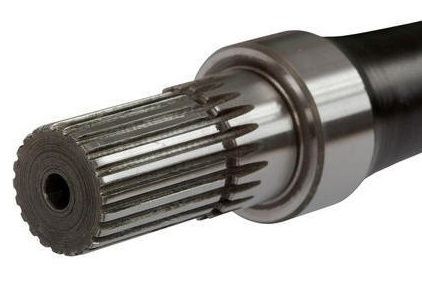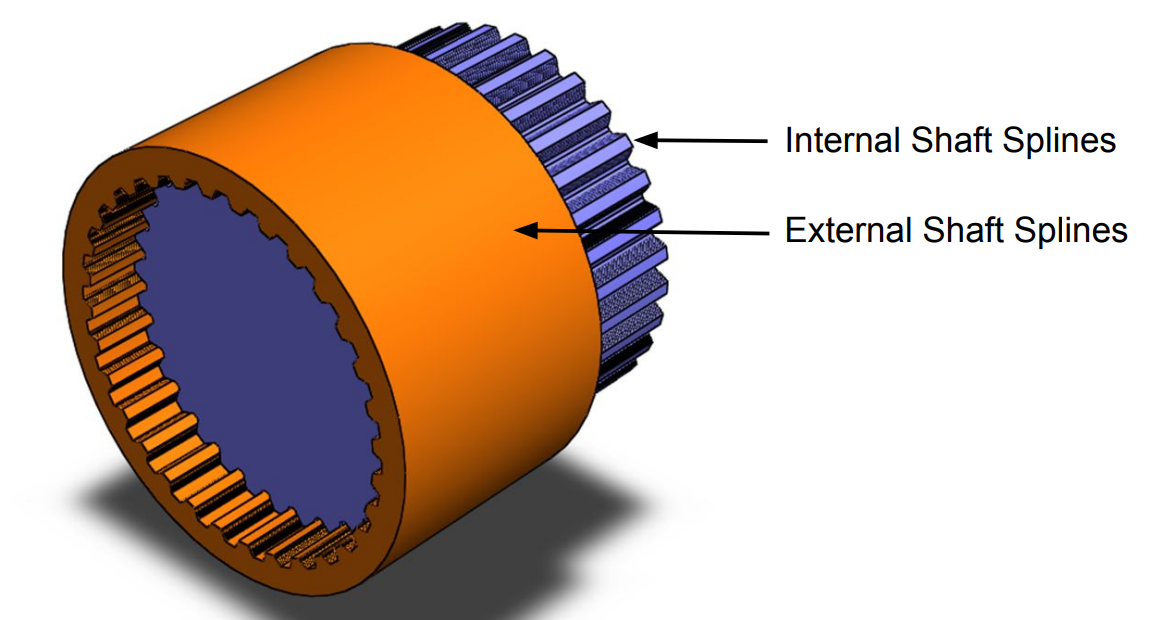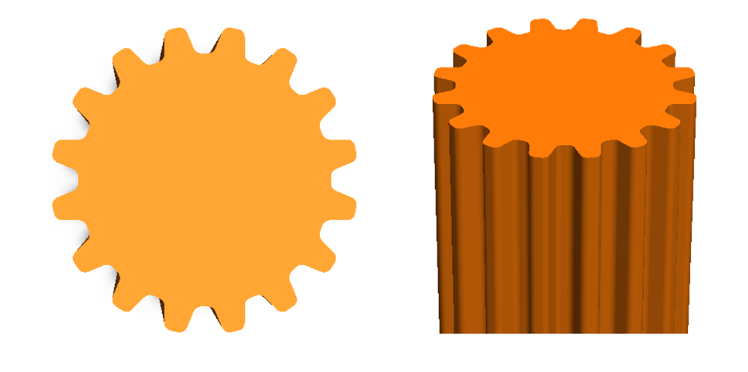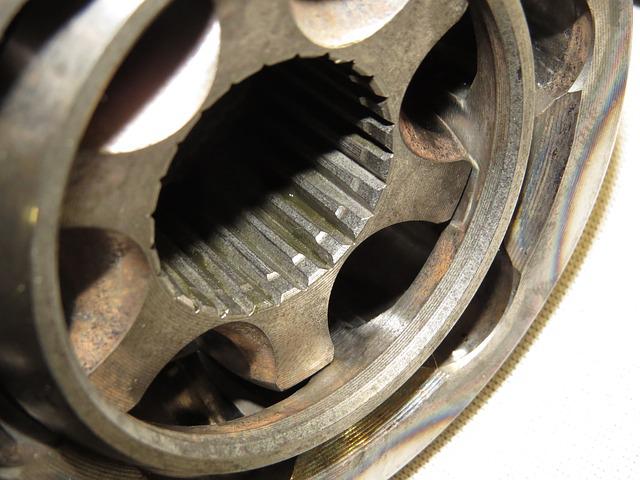Shaft Splines and serrations are mechanical devices widely used in mechanical drive systems to transfer rotational motion from input to output shaft. This article covers various types of shaft splines and serrations, their advantages, disadvantages, and applications.
What are Shaft Splines and Serrations ?
Shaft splines and serrations are like multiple parallel keys and keyways in a shaft to transfer torque and rotational motion. We can manufacture them using milling, hob, broaching, and rolling operations.

Keys are an additional part of a keyed joint, whereas keys are part of the shaft in a splined shaft. Shaft splines create a stronger joint than the keyed joints because keyways in keyed joints weaken the rotating shaft and reduce its torque transferring capacity.
Applicable Standard
- ANSI B92.1: Involute Splines and Inspection
- BS 2059: Specification For Straight-Sided Splines And Serrations
- IS 2610, IS 3665, IS 2327
- DIN 5463 and DIN 5480
Applications of Splined Shafts
Following are the applications of shaft splines and serrations.
- To transfer high torque rotary motion without slippage.
- Interlocking between gear and shaft.
- Works as a linear guide when working with a bearing and internal spline gear mechanism.
- Transfer power between pulleys.
Spline Shaft Material
Here is the list of Spline Shaft Materials.
- Metals
- Aluminum
- Brass
- Stainless Steel
- Steel Alloys
- Titanium
- Non-Metals
- Delrin
- Nylon
Types of Spline Shafts
- According to Shaft spline Position
- Internal Spline
- External Spline
- According to Shaft spline Profile
- Involute Splines
- Parallel Splines
- Serrated
- Helical splines
Internal and External Spline

Internal splines have teeth around their outer circumference parallel to the rotation of the shaft. Whereas, External splines have teeth at the internal circumference. Internal and external shaft splines are used in combination to transfer rotational motion from input to output.
Involute Splines
These splines profile is similar to the involute gear teeth profile with 30°, 37.5°, and 45° pressure angles.

Splines with involute profile teeth are more popular than other types. It has the following advantages:
- High torque transmitting capacity.
- Self-aligning properties.
- Ease of manufacturing because we can use gear cutting machines.
Parallel Splined Shaft and Hub
These shafts have equally spaced straight and parallel teeth in radial and axial directions. In other words, parallel shaft splines have square profile ridges or teeth. The number of teeth in a shaft can vary from 4 to 12.

Advantages
- Can transfer higher torque than involute splines and serrations.
Disadvantages
- High-stress concentration at the root of the flank.
- I do not have the self-centering ability.
Serrated Shaft Splines
These shafts have straight teeth or flank at an angle. In other words, serrated teeth are V-shaped. The flank angle may vary from 50° to 90°.
Advantages
- Ability to self-align.
- More teeth are possible on a smaller circumference shaft. Therefore, they have applications where the shaft diameter is small.
Disadvantages
- Used for low torque transmission applications.
Helical Shaft Splines
They have equally spaced teeth that form a helix around the shaft. It improves overall load-carrying capacity.
Advantages
- Capable of handling high torque.
- It can transfer combined rotation and axial motion.

Add a Comment